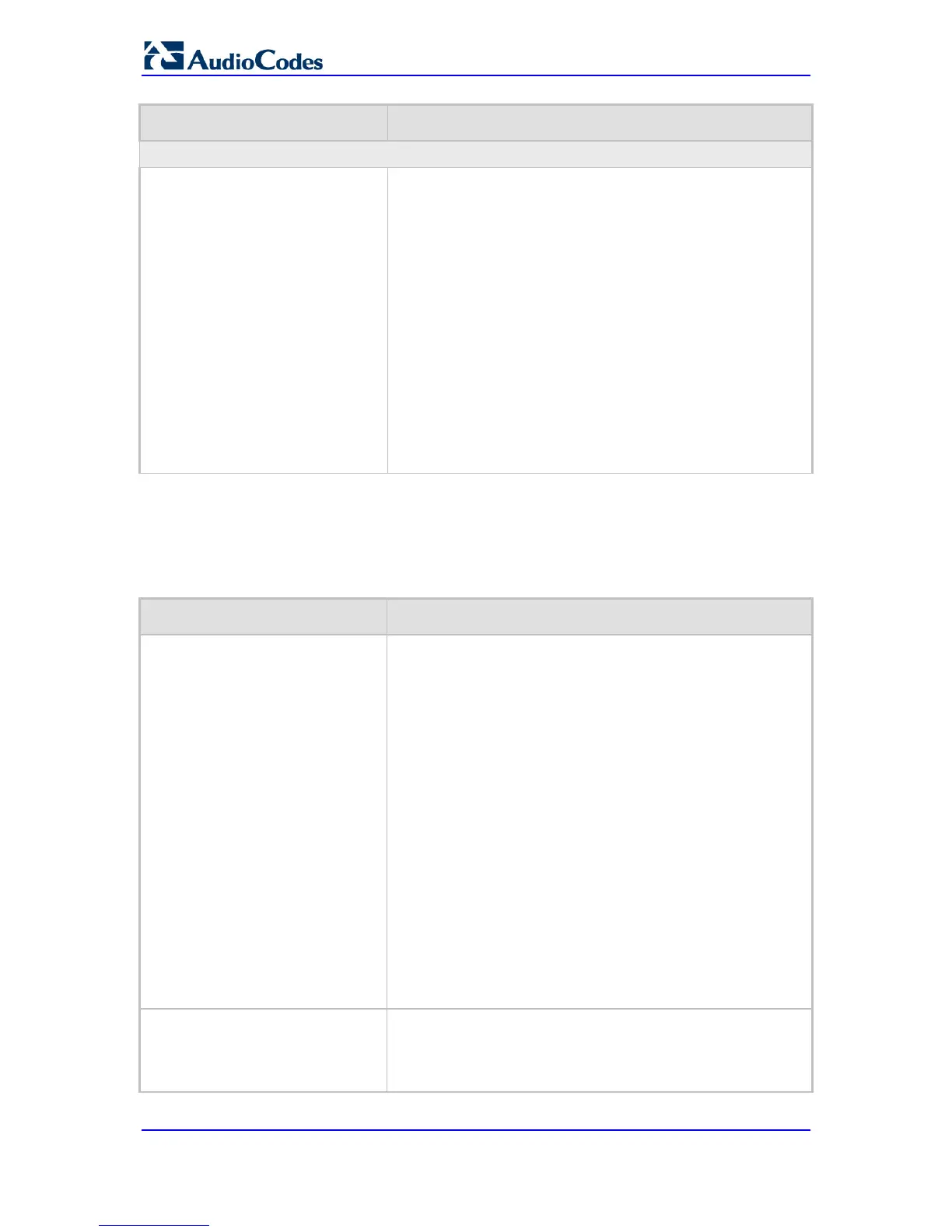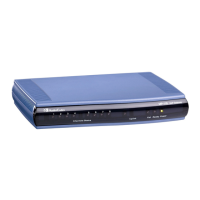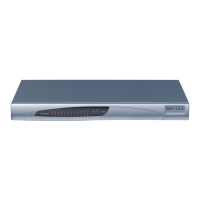Parameter Description
Reject Anonymous Calls Per Port Table
[RejectAnonymousCallPerPort]
This table parameter determines whether the device rejects
incoming anonymous calls. If enabled, when a device's FXS
interface receives an anonymous call, it rejects the call and
responds with a SIP 433 (Anonymity Disallowed) response.
The format of this parameter is as follows:
[RejectAnonymousCallPerPort]
FORMAT RejectAnonymousCallPerPort_Index =
RejectAnonymousCallPerPort_Enable;
[\RejectAnonymousCallPerPort]
Where,
Enable = accept [0] (default) or reject [1] incoming
anonymous calls.
For example:
RejectAnonymousCallPerPort 0 = 0;
RejectAnonymousCallPerPort 1 = 1;
Note: This parameter is applicable only to FXS interfaces.
43.10.5.2 Call Waiting Parameters
The call waiting parameters are described in the table below.
Table 43-40: Call Waiting Parameters
Parameter Description
Web/EMS: Enable Call Waiting
[EnableCallWaiting]
Enables the Call Waiting feature.
[0] Disable
[1] Enable (Default)
If enabled, when an FXS interface receives a call on a busy
endpoint, it responds with a 182 response (and not with a 486
busy). The device plays a call waiting indication signal. When
hook-flash is detected, the device switches to the waiting call.
The device that initiated the waiting call plays a call waiting
ringback tone to the calling party after a 182 response is
received.
Notes:
The device's Call Progress Tones (CPT) file must include a
Call Waiting ringback tone (caller side) and a call waiting
tone (called side, FXS only).
The EnableHold parameter must be enabled on both the
calling and the called side.
You can use the table parameter CallWaitingPerPort to
enable Call Waiting per port.
For information on the Call Waiting feature, see Call Waiting
on page 251.
EMS: Send 180 For Call Waiting
[Send180ForCallWaiting]
Determines the SIP response code for indicating Call Waiting.
[0] = (Default) Use 182 Queued response to indicate call
waiting.
[1] = Use 180 Ringing response to indicate call waiting.

